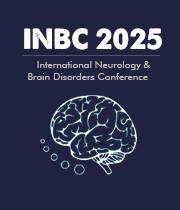Title : Transcutaneous vagus nerve stimulation modulates hippocampal glutamate–glutamine levels and brain activation in a rat model of chronic stress
Abstract:
Introduction: Transcutaneous vagus nerve stimulation (tVNS) has gained attention as a non-invasive, drug-free approach for treating neurological and psychiatric disorders [1]. This preliminary study aimed to assess neurometabolic and brain activation changes following tVNS in an animal model of chronic unpredictable mild stress (CUMS).
Materials and methods: Sixteen male Wistar rats were randomly assigned to four groups: naïve, stress (both without tVNS), control + tVNS, and stress + tVNS. Animals in the stimulation groups received a single session of vagus nerve stimulation. Under isoflurane anesthesia, the positive and negative electrodes were placed in contact with the skin over the line of the cervical branch of the vagus nerve in a shaved region of the neck. The stimulation parameters were identical for both experimental groups, with current delivered in cycles of 0.596 s “on” and 6.215 s ”off”. Each “on” cycle consisted of six 1 ms pulses separated by 97.7 ms period [2] (amplitude 1 mA, total stimulation time 34 minutes per day). Magnetic resonance spectroscopy (MRS) and functional MRI (fMRI) were performed using a 7T Bruker animal MRI system. Whole-brain fMRI was conducted during tVNS, and MRS of the right hippocampus was acquired immediately after stimulation. Groups without tVNS underwent MRS only. Stressed rats were subjected to the daily CUMS protocol for five weeks. The effectiveness of the stress induction was assessed using the Elevated Plus Maze and Open Field tests before and after the CUMS protocol.
Results: After five weeks of stress, rats showed decreased exploration time and lower locomotor activity compared to baseline. MRS data were processed using LCModel to estimate absolute concentrations of brain metabolites. Glutamine levels were significantly elevated in both the control + tVNS and stress + tVNS groups compared to the naïve group (5.5 ± 0.4 vs. 4.4 ± 0.6 mM, p = 0.02 and 5.7 ± 0.5 vs. 4.4 ± 0.6 mM, p = 0.008, respectively). Additionally, glutamine levels were significantly higher in the stress + tVNS group
compared to the stressed group without stimulation (5.7 ± 0.5 vs. 4.6 ± 0.3 mM, p = 0.02). Glutamate concentrations were significantly higher in the stress + tVNS group compared to the control + tVNS group (13.5 ± 0.7 vs. 11.6 ± 1.0 mM, p = 0.03). Taurine levels showed a non-significant increasing trend in the stress + tVNS group compared to the stressed group (9.1 ± 0.5 vs. 7.9 ± 0.8 mM, p = 0.06). fMRI responses to tVNS were detected using generalized linear modeling (AFNI 3dDeconvolve and 3dREMLfit). While the groups had similar levels of hippocampal activation, the brainstem of the stressed group contained more voxels with t-scores exceeding 2.0.
Conclusion: Behavioural tests confirmed the effective stress induction via CUMS. tVNS influenced glutamine levels in the hippocampus of healthy rats and modulated both glutamine and glutamate concentrations in animals subjected to chronic stress. Brain activation with tVNS was evident in both control and stressed animals.



